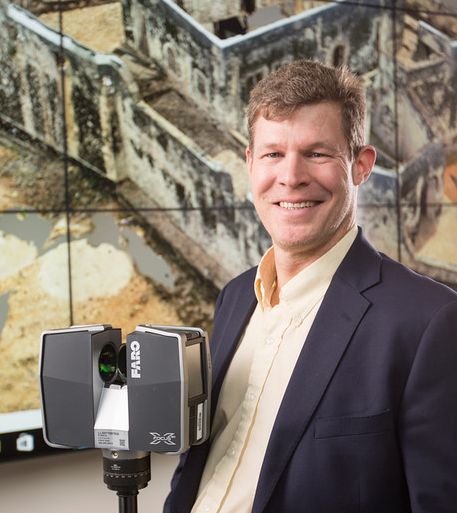
Michael J. Jarvis
Professor of History
Director of the Digital Elmina Project; Director of Smiths Island Archaeology Project
PhD, College of William and Mary, 1998
- Office Location
- 441 Rush Rhees Library
- Web Address
- Website
Office Hours: Wednesday, 1-3 p.m. or by appointment
Research Overview
Interests
Public History and Museum Studies; Early American and Atlantic
History 1450-1850 (Transnational); Material Culture and Historical
Archaeology (Transnational); Digital History
Historical Research
My research interests center on understanding historical worlds in motion–people and things transiting oceanic and conceptual spaces and the agents who move them. Specifically, I study the creation of oceanic, imperial, international and intercolonial networks of trade, migration, and communication and the maritime infrastructure that underpinned them My work is necessarily interdisciplinary; trained as a social historian and historical archaeologist, I also incorporate material culture, architecture, landscape/seascape studies, environmental history, and sensitivity to gender and race as historical cultural constructs throughout the early Modern Atlantic World.
Although my earlier research has focused on multiracial maritime communities in Bermuda, the Bahamas, the Caribbean and Eastern North America and seeks connections and contrasts between Spanish, Dutch, French, and British trade and settlement patterns, since 2016 I have also expanded my geographic reach to include maritime West Africa, particularly the communities surrounding European gold- and slave-trade forts and the circum-Atlantic coastal ship and canoe transits that sustained the more heavily studied trans-Atlantic slave trade. Adding Atlantic Africa to my understanding of Caribbean and colonial British North American history helps me interpret global dynamics – the expansion of empires and capitalism, colonization as a process, ethnogenesis, mass migrations, environmental degradation, the contagion of revolutions and revolutionary ideals – in new ways and within a multi-sited comparative framework.
I address many of these subjects in my first book In the Eye of All Trade: Bermuda, Bermudians, and the Maritime Atlantic World, 1680-1783 (Chapel Hill: University of North Carolina Press/OIEAHC, 2010), which won the American Historical Association’s James A. Rawley Book Prize in Atlantic History and argues that we need to conceive of multiple, overlapping Atlantic worlds, each grounded in local and regional contexts. My second book, Isle of Devils, Isle of Saints: An Atlantic History of Bermuda, 1609-1684 (Johns Hopkins University Press, 2022), presents Great Britain’s oldest colony as an exceptional early success story amid general English colonial struggles, expands our notion of a Puritan Atlantic, and argues that Bermuda experienced an early ethnogenesis shaped by its profoundly maritime environment, puritan utopian ambitions, multiracial and multicultural settler community, and distance from metropolitan control.
My current American archaeological fieldwork takes sixty-acre Smith’s Island as a unit of study to investigate Bermuda’s development from the colony’s first farmstead in 1610 to the present as we systematically identify and investigate 26 sites (and counting) that span a four-hundred year history. Since 2012, my five-week U of R summer fields schools have trained more than forty students in archaeology field and research methods at eleven different sites, including a circa 1615 early cabin, 18th-19th c. smallpox and yellow fever quarantine pest house, an early 19th-century free black family homestead, and a cave site where enslaved Bermudians apparently gathered. Presently (2023) we are clearing a large area near Smallpox Bay thought to be the site of Governor Richard Moore’s first capital, built in August 1612.
My archaeology field schools train undergraduate and graduate students in archival research, remote sensing, excavation methods, artifact identification and analysis, and site recording techniques. The Smith’s Island Archaeology Project (SIAP) outreach website shares our findings in real-time with the general public and has had more than 142,000 unique visitors since its launch in 2012. The field school is returning in May 2023 after several years of COVID-related suspension and welcomes applicants and volunteers.
I am an early adopter of/strong advocate for/avid practitioner of Digital Public History and am committed to using cutting-edge technologies to digitally capture and analyze historic buildings and sites as well as employing digital means and media to share my research findings with a broad global public. I use photogrammetry, laser scanners, drones, 3D modeling software, GIS, and videogame engines to record, examine, interpret, experiment with, and visualize history spatially and create interactive interpretive possibilities that enable users to virtual visit and “tour” places in the present and past that would otherwise be difficult or impossible for them to experience. No longer a “lone scholar in the archive,” I now collaborate regularly with computer scientists, structural engineers, videogame designers, VR/AR/XR technologists, website architects, videographers, conservators, museum professionals, and heritage specialists and train students and heritage professionals in a wide array of disciplines in project teams.
I began 3D modeling on the Smith’s Island archaeological sites I was actively destroying as I excavated, in effect creating high-resolution 3D snapshots of stratigraphic relationships for later study. I then transitioned to photogrammetric modeling the Town of St. George’s many standing historical buildings that gained it UNESCO World Heritage Site status. Building on research that led to my first book, Bermuda's Architectural Heritage: St. George's (Bermuda National Trust, 1998), I created the Virtual St. George’s Project as a DH initiative combining empirical and quantitative New Social History methods with 2D GIS spatial analysis and 3D building and landscape rendering. The resulting interactive humanistic geospatial laboratory and multi-year historical simulation experience is still a work in progress, advanced by UR student researchers taking my HIST 285 Digital History course. By integrating public history and digital history with traditional historical and interdisciplinary training, I hope to prepare majors and graduate students to become 21st-century historians who will pioneer new interactive and immersive digital ways to research and understand historical subjects.
During the five years I served as Director of UR’s Digital Media Studies program (2014-2019), I helped create a curriculum that blended computational science and humanities skillsets using a laddered sequence of project-based design and development courses that culminated in a three-semester group capstone project. I also oversaw development of video and computer labs in Ronald Rettner Hall for Media Arts and Innovation to support the DMS curriculum by adding 3D printers and creating a Digital Technologies Lending Library to provide students and faculty with access to emerging technologies to use in their own project development.
Digital Public History and Archaeology come together in my Digital Elmina and Digital Kormantin sites, which spring from UR collaborations with Syracuse University, the University of Ghana, and the Ghana Museums and Monuments Board. Launched in 2016 by Archaeology, Technology and Historic Structures (ATHS) Program Director Renato Perucchio, this multi-year initiative brings together Ghanaian and American faculty and students to digitally record, model, and structurally analyze Elmina Castle and other gold-and slave-trade forts that collectively constitute a UNESCO World Heritage Site. Three summer field schools (2017-2019) have meticulously recorded much of Elmina Castle (built 1482), the oldest surviving Atlantic Slave Trade base in Sub-Saharan Africa. During field schools I train American and Ghanaian students in laser scanning, photogrammetry, and drone photo surveying as we document the castle’s 160 rooms and areas. In 2019, we also recorded and structurally analyzed Fort Amsterdam (Kormantin) and did extensive archaeological testing in now-collapsed portions of the fort.
Black Past Lives Matter: Digital Kormantin, a platform for enabling people to make virtual visits to Fort Amsterdam today and during the abovementioned archaeological fieldwork was awarded a NEH Digital Humanities Advancement Grant in 2021. Working in collaboration with Rochester Institute of Technology videogame design faculty and students, Syracuse University archaeologists, and University of Ghana heritage scholars, I am building a website and Unity-based immersive tour experience enabling a global audience to “visit” Abandze, Ghana, learn about its history, and discover how historians, archaeologists, and engineers do the research required for accurate site interpretation and structural assessments. COVID disruptions have delayed progress but a site visit and additional archaeology in summer 2023 will help us complete the project.
A commitment to Public History runs through all my research interests and professional practices. It is vital that scholars make the past accessible and relevant to a broader public as well as to university students and our academic peers. Archaeology unearths new information to complement documentary research. Digital modeling and simulations help us to better visualize and understand an often murky and unevenly told early Atlantic past. Digital tools now enable us to virtually stand in the shoes and see reconstructed worlds through the eyes of past people and interact with those worlds, making the past more tangible and relevant to “born digital” Gen Z students who have grown up playing videogames. Rather than bemoan the ubiquity of digital media and decline in reading the printed page, I try to hack commercial and industry applications and put them to humanistic uses. I make history with a camera, trowel, website, scanner, and computer as well as the pen and embrace rather than bemoan that the discipline is changing.
My commitment to public history is pedagogical as well as philosophical. Since coming to UR, I’ve supervised more than 41 Public History undergraduate internships based in Rochester’s rich array of museums, archives, historic sites, and education centers. These internships let students “try on” a potential career path for a semester and have inspired many to go on to museum studies/library sciences graduate programs and jobs. HIS 240/440, a formal Public History Theory and Practice Rochester community partner-based seminar offered in Spring 2020, took a decided digital turn due to COVID pandemic disruptions when the class shifted the physical museum exhibit focused on Rochester’s Jazz History designed for a city library to the digital exhibit Spirt of The Pythodd. Although challenging, “learning by doing” collaborative team history-based projects both mirror public historians’ future work environments and demand students learn a wide range of different skills needed to design, develop, and disseminate historical truths of their own devising.
Graduate Research Fields
I offer the following fields for graduate research: U.S. and the World 1500-1865; Digital & Public History; Atlantic World History 1450-1820; Maritime History in the Age of Sail; Digital Humanities Design and Development; Atlantic World Historical Archaeology. For more information on our MA and PhD programs, see our graduate program page.
I am accepting new graduate student advisees for our MA and PhD programs.
Courses Offered (subject to change)
- HIST 162: Early America to 1783
- HIST 196: Black Past Lives Matter: Frederick Douglass’s Rochester
- HIST 200 : Gateway Research Seminar: PIRATES OF THE CARIBBEAN
- HIST 240/440: Public History: Theory and Practice
- HIST 262/262W: BENJAMIN FRANKLIN’S AMERICA: ANGLO-AMERICAN CULTURE IN THE AGE OF REVOLUTION, 1720-1790
- HIST 277: When New York was the Wild West, 1500-1850
- HIST 280/280W/497: Introduction to Historical Archaeology: Field and Research Methods
- HIST 282/282W/471: Digital Hands-On History
- HIST 285/285W: Digital History: Building a Virtual St. George's
- HIST 302W/402: Spatial History: Putting the Past in its Place
- HIST 304W/404: Readings in Atlantic History
- HIST 305: The Maritime Atlantic World in the Age of Sail, 1450-1850
- HIST 360W/460: America and the World to 1865
- HIST 365W/465: Topics in Early American History
Selected Publication Covers
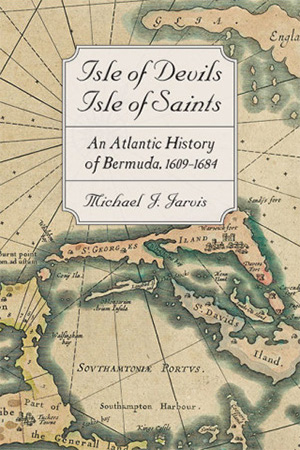
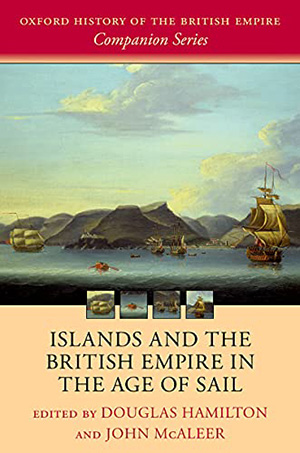
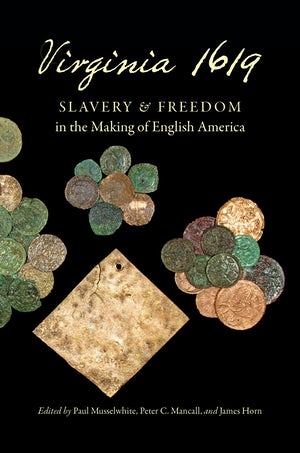
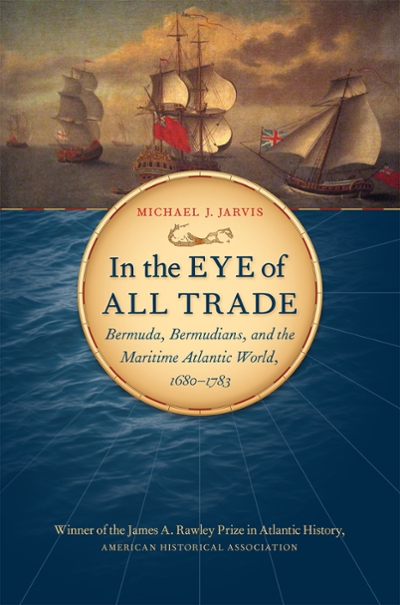
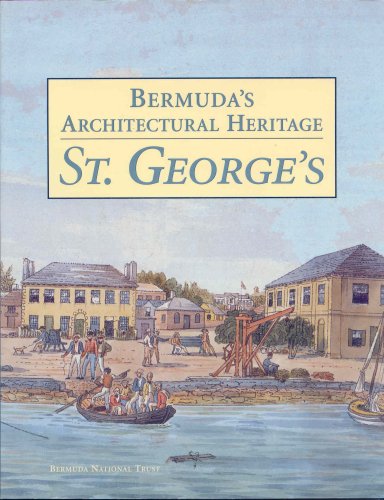
Selected Publications
- Isle of Devils, Isle of Saints: An Atlantic History of Puritan Bermuda, 1609-1684 (Johns Hopkins University Press, 2022)
- “Islands of Settlement: Britain’s Western North Atlantic Islands in the Age of Sail, 1497-1935,” in Douglas Hamilton and John McAleer, eds., Oxford History of the British Empire: Islands and the British Empire in the Age of Sail (Oxford University Press, 2021), 55-76.
- “Conflict and Commerce: Portuguese-Dutch-African Entanglements on the Gold Coast, 1596-1750,” In Silvia Mitchell and Erica Heinsen-Roach, eds. Ibero-Dutch Entanglements in the Seventeenth Century: Conflict and Collaboration in Global Perspective. Book proposal, Purdue University Press.
- “Bermuda and the Beginnings of Black Anglo-America,” in Paul Musselwhite, Peter C. Mancall, and James Horn, eds., Virginia 1619: Slavery and Freedom in the Making of English America (Williamsburg, Va., and Chapel Hill, N.C., 2019), 108-132
- Co-author, Arguing with Digital History working group, “Digital History and Argument,” white paper, Roy Rosenzweig Center for History and New Media (November 13, 2017)
- In the Eye of All Trade: Bermuda, Bermudians and the Maritime Atlantic World, 1680-1783(Chapel Hill, 2010)
- "The Binds of the Anxious Mariner: Patriarchy, Paternalism, and the Maritime Culture of Eighteenth-Century Bermuda," Journal of Early Modern History XIV (June 2010): 1-43.
- "Maritime Masters and Seafaring Slaves in Bermuda, 1680-1783," William and Mary Quarterly, 3rd series LIX (July 2002):585-622.
- Bermuda's Architectural Heritage: St. George's. volume II, Bermuda National Trust Architectural Heritage Series (Hamilton, Bermuda, 1998).
- "The Vingboons Chart of the James River, circa 1617," William and Mary Quarterly, 3rd ser., LIV:357-74 (1997), with Jeroen van Driel.
- "'The Fastest Vessels in the World': The Origin and Evolution of the Bermuda Sloop, 1620-1800." Bermuda Journal of Archaeology and Maritime History VII:31-50 (1995).
